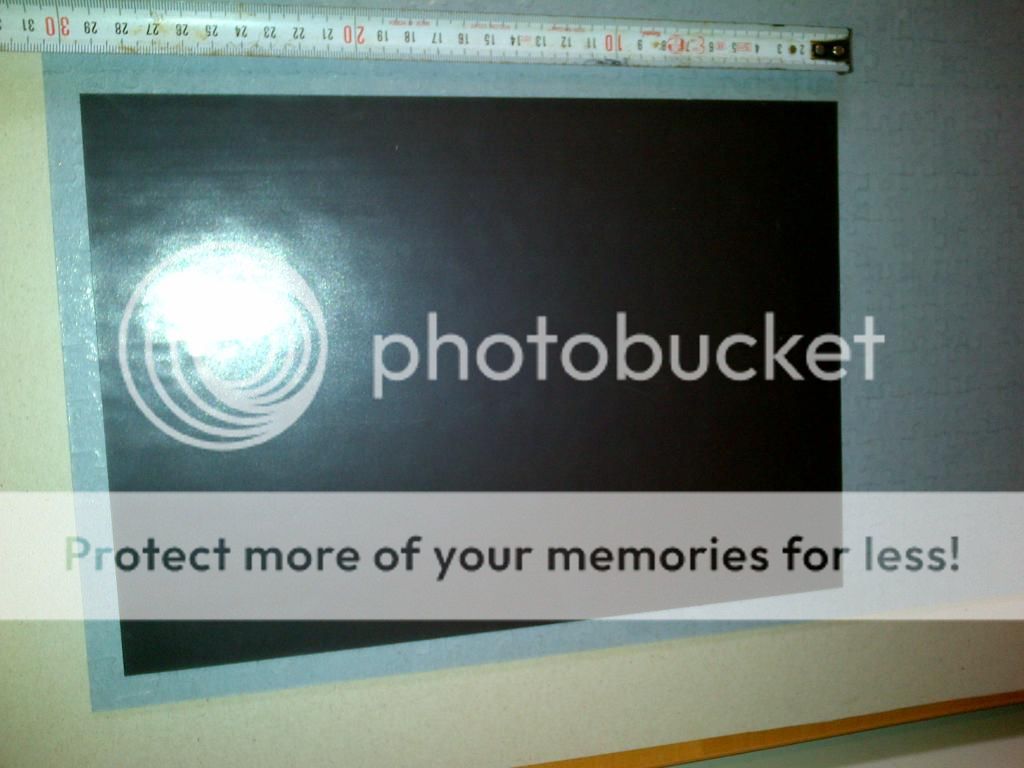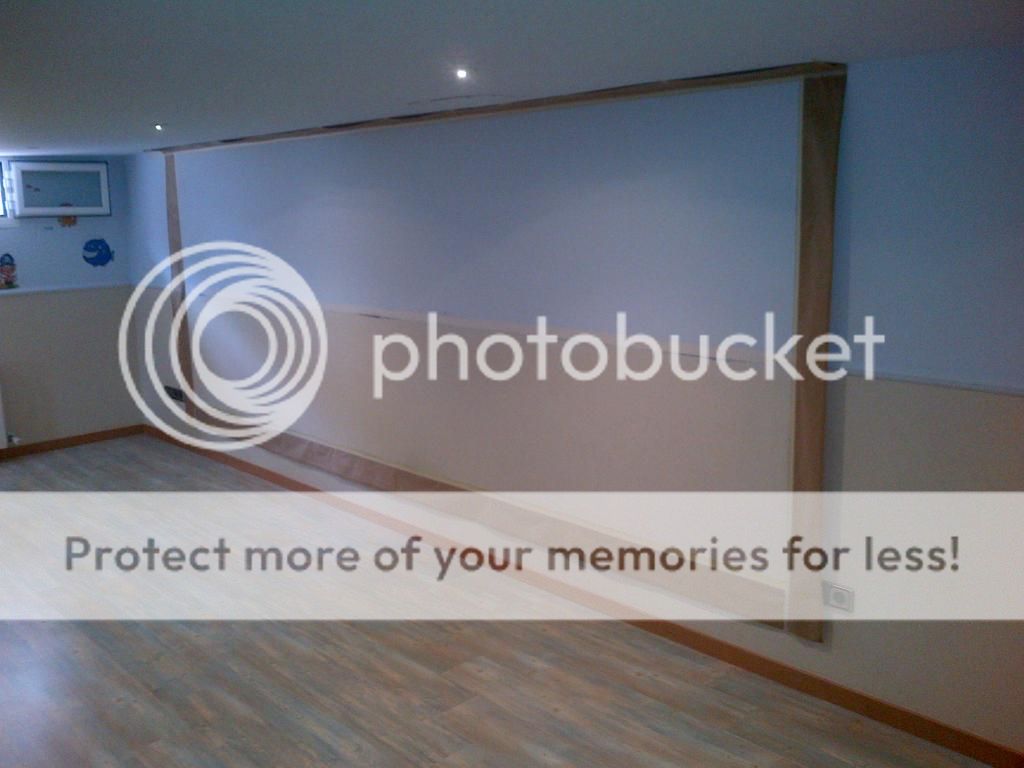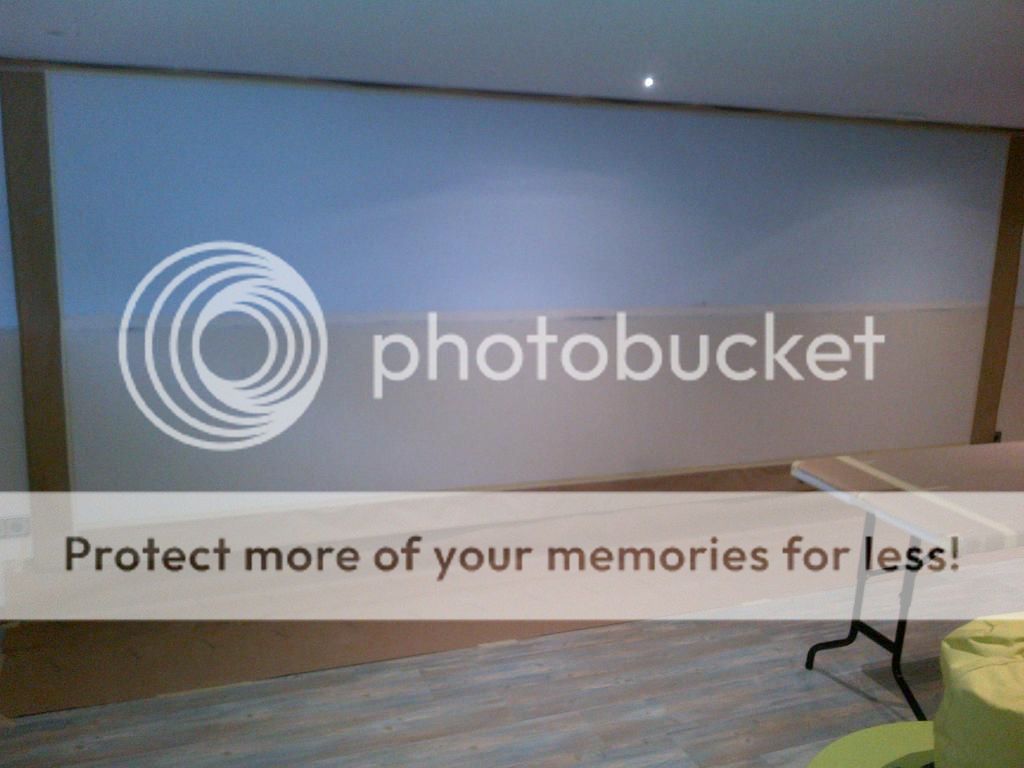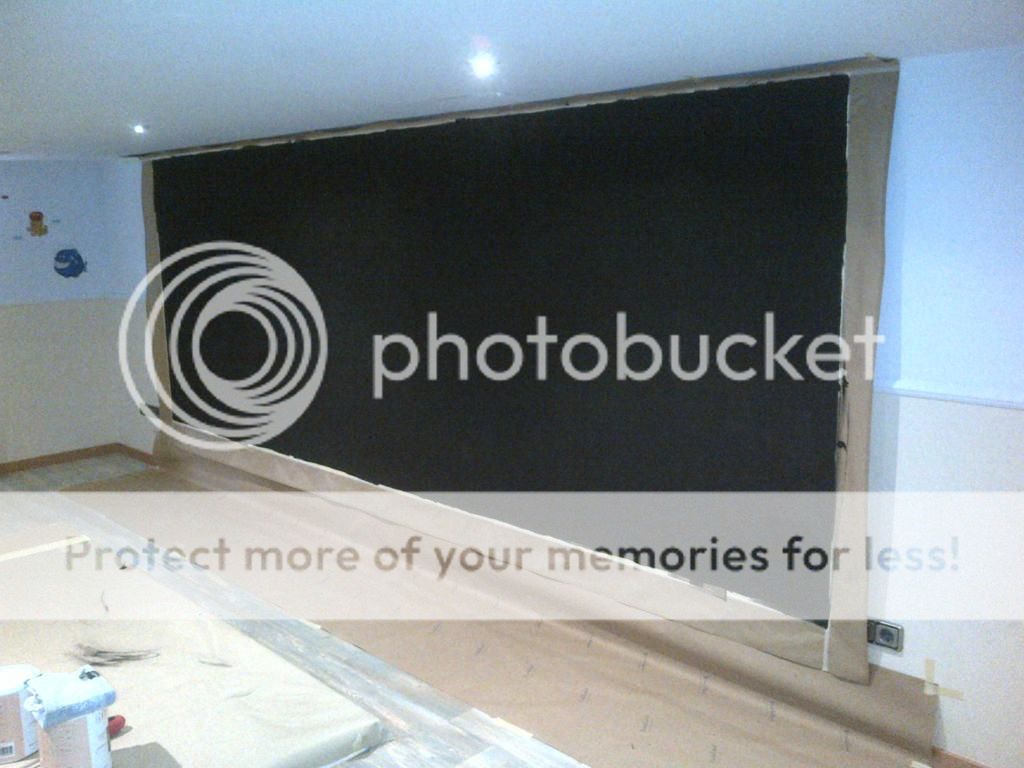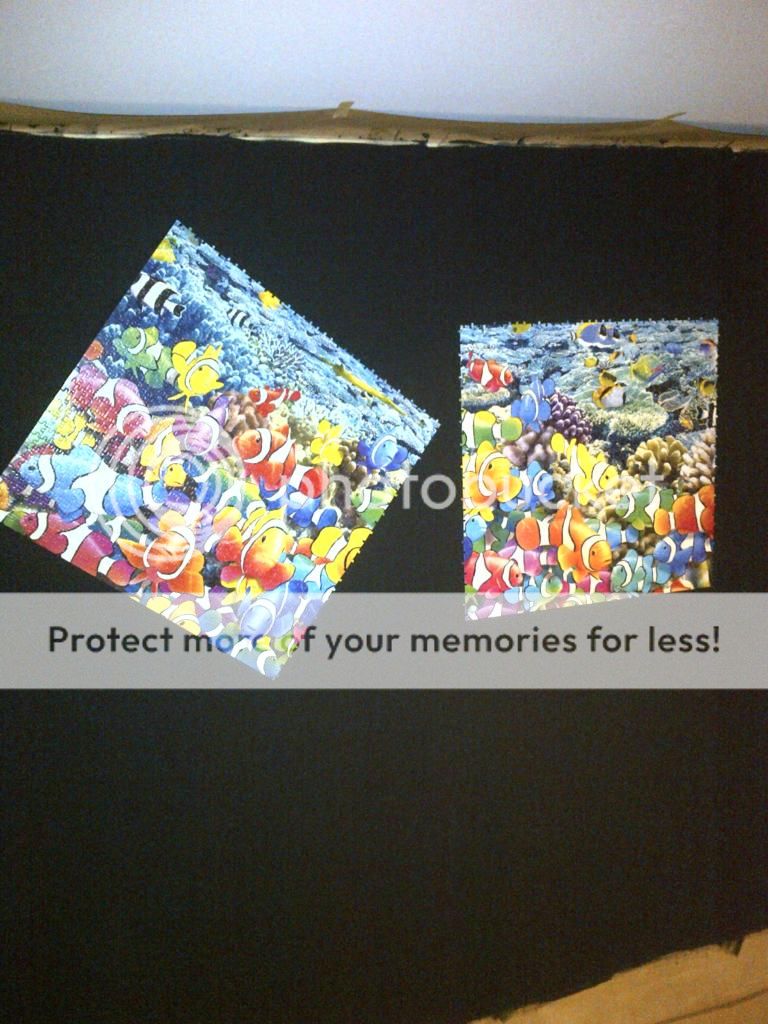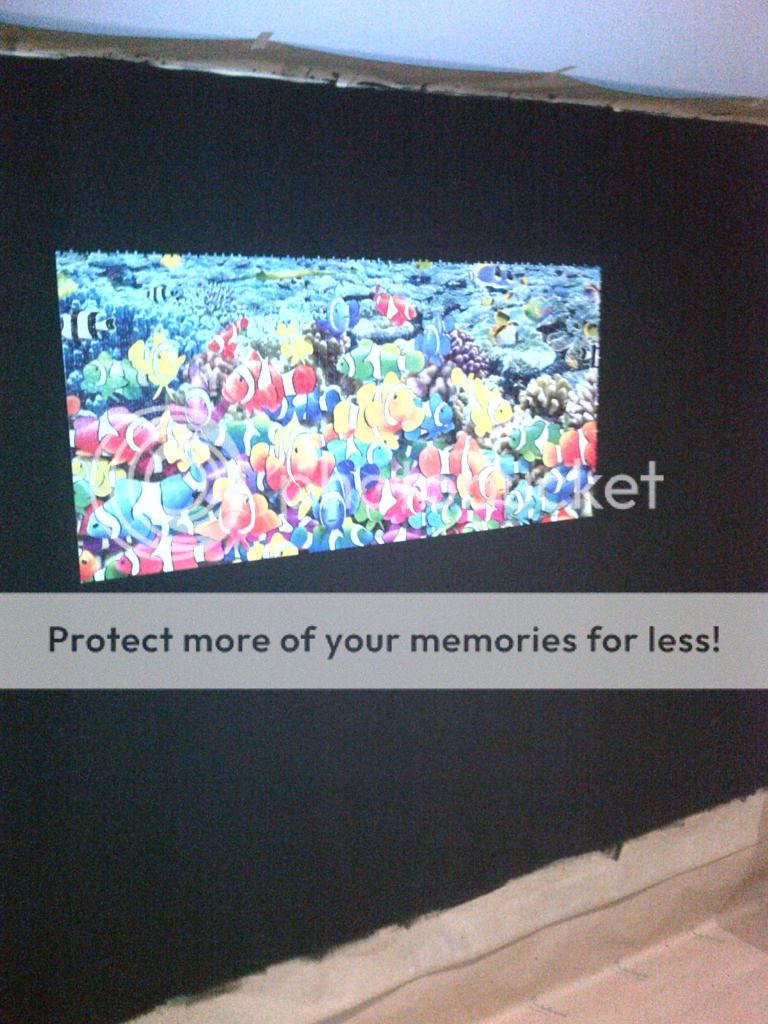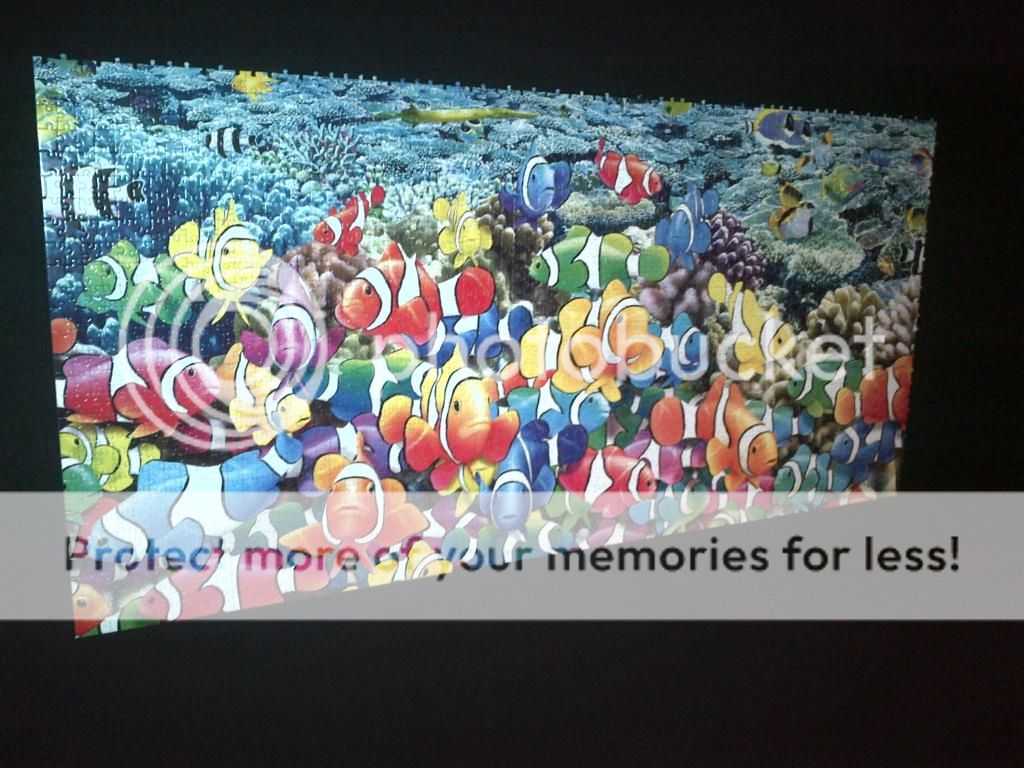6000 pieces and more
The largest jigsaw puzzles of the world
Friday, March 13, 2020
List updated up to 224 puzzles
A long time has passed since I updated the list and many new puzzles have been added to it, a total of 20.
Numerous competitors have launched for the already dubious title of "the world's largest puzzle" and we are already at 54,000 pieces.
On the other hand, some ancient puzzles "have appeared" and have been added to the list, such as the 6,000 ClemToys (Clementoni's precursor brand) and the 6,000 Tenyo "A trip to Bavaria" that joins the list of impossible to get Japanese puzzles .
Also the already usual annual news from Educa, Ravensburger, Clementoni, etc.
And the list does not stop growing !!!!!
Monday, July 23, 2018
Magnetic holding of puzzles (or how to easily hang your big puzzles) - IV
In the previous post we already had the puzzle and the wall ready to hang. Now you just have to take each one of the plates, place it on the wall joining it with the previous one and you're done!
If you are hanging a "small" puzzle, let's say 6000-8000 pieces or smaller, surely you will not have problems, but with bigger puzzles divided into many plates, you may have lace problems, because the lace slacks can play in your against and the last plates may not fit well.
To avoid these problems, there are some little tricks:
This last point is the fundamental trick so that hanging the puzzle be easy. To do this, join the parts that form a vertical section on the floor, and fasten them from behind with a little removable lining (a strip of 2 cm wide is enough), so that when moving the vertical section does not dislodge. This way it is super easy to mount it and you save problems of fit between sections. With this trick, I hung the "Life" in less than 5 minutes !!!!
Here I show you an example of what I mean by "vertical sections" in which you can see 2 vertical sections of "Life", and 3 vertical sections of the "Views", both divided by zippers.
And this is the final result, once all the parts are hanged:
It really is a laborious process, but the day you want to pick up and save your puzzle you can do it without problems, and easily change it for another one.
If you dare to use this method, I am at your disposal to answer any questions you may have.
And if you manage to improve or simplify the process I would be happy to hear you about it and share it with the rest of the big puzzle lovers!
If you are hanging a "small" puzzle, let's say 6000-8000 pieces or smaller, surely you will not have problems, but with bigger puzzles divided into many plates, you may have lace problems, because the lace slacks can play in your against and the last plates may not fit well.
To avoid these problems, there are some little tricks:
- Do not divide it in many places (you will have slack problems for sure), or in a few (they will be very large plates and it will cost you to position them well).
- Divide the puzzle by zippers; this way they will suffer less the unions and will allow you to fit and undo more easily.
- Make sure to place the first perfectly horizontal section, especially with very large puzzles, if you do not want the puzzle to be twisted at the end of the assembly.
- Hang full vertical sections, instead of hanging plate to plate.
This last point is the fundamental trick so that hanging the puzzle be easy. To do this, join the parts that form a vertical section on the floor, and fasten them from behind with a little removable lining (a strip of 2 cm wide is enough), so that when moving the vertical section does not dislodge. This way it is super easy to mount it and you save problems of fit between sections. With this trick, I hung the "Life" in less than 5 minutes !!!!
Here I show you an example of what I mean by "vertical sections" in which you can see 2 vertical sections of "Life", and 3 vertical sections of the "Views", both divided by zippers.
24.000 - Educa - Life
12.000 - Schmidt - Beautiful View
If you dare to use this method, I am at your disposal to answer any questions you may have.
And if you manage to improve or simplify the process I would be happy to hear you about it and share it with the rest of the big puzzle lovers!
Magnetic holding of puzzles (or how to easily hang your big puzzles) - III
In the previous post, we already had the puzzle lined. Now we are going to focus on "the glue" (magnet plates, which are the ones that will keep the puzzle attached to the wall) and in the preparation of the wall to be magnetic.
Stick to the book liner, adhesive fridge magnet plates.
Like the Aironfix, there are sure to be many brands and sellers; I have used one that I indicate, IDEMAG, but looking for sure there is more. There are various formats (A4, A3, etc even in rolls), with adhesive and without adhesive, and most importantly, with various clamping forces (usually 14,20,30,48 and 50 gr / cm2), the higher number the higher of clamping force, but also higher price and greater weight. As one of the objectives is to keep the price low, I use the lower clamping force (14 gr / cm2), and adhesive, for ease of use (can also be purchased without adhesive, cheaper, and use adhesive spray).
NOTE: the value of the adhesion strength is for horizontal adhesion, for vertical adhesion it is necessary to divide it by 2; that is, that in our case we have 7 gr / cm2 (more than enough for what the pieces weigh).
Here I give you an example: the back is lined with Aironfix and on this there is an A4 size magnet plate.
Obviously, if we line the entire puzzle from behind with plates of maximum clamping force (50 gr / cm2), it is super safe, but the price skyrockets. To keep the price low, and ensure the safety of the puzzle, it is appropriate to use the plates with the lowest clamping force (14 gr / cm2) and to cover the entire surface of the puzzle with them.
With fewer plates, it can also be worthwhile, but it is less secure. I explain.
One of my first tests I did with a 3000 ("Interludio" by Educa): with four A4 size plates distributed on the top, it is held, but any blow or strong gust of wind, you can throw it away. Covering all the surface with plates (14 A4 plates) is literally stuck to the wall and completely safe, immovable.
On the other hand, the adhesive of the magnetic plates is so strong that once stuck to the lining, it costs a lot to separate, you have to make a lot of strength and do it correctly so that the puzzle does not suffer. It is also a slow task. And to top it off, there are some remains of adhesive on the lining, which must be removed to avoid sticking some parts of the puzzle with others when storing it.
To avoid this problem, there are two alternatives:
Aspects to consider:
So, after all this roll, the solution presents several valid options:
"Magnetize" the wall: with magnetic paint or magnetic wallpaper.
Both the paint and the paper, are simply normal products to which they add iron filings or similar in their manufacture, so that they are attracted by magnets. Here there are many variety of brands of paints and papers.
I have tried magnetic wallpaper and magnetic painting and both work perfectly. Wallpaper is faster to place, but more expensive. The painting is more laborious, you have to give several layers, but cheaper.
In case of using paint, it is usually black or very dark paint (due to the high iron content), although some brands are also starting to draw it in various colors. Once dry, it can be painted over with any normal paint. With what once the painting is finished, nothing is noticed on the wall.
It is clear that this is the most expensive and most laborious thing to do, but as I said, once "magnetized" the wall, you have it forever.
Aspects to consider:
And now some images of the process:
Here before painting, already with the area to be painted delimited and protected around:
And here already painted:
The next step will be to paint the area the same color as the rest of the wall, so that you do not see the black color and you do not notice (you will always notice a little, because after 6 layers of paint, the edge of the the area painted black presents a little relief). But first, a few more tests to verify that everything is going well.
A few pieces of "Life" to do the test ...
And here are some small videos to show how easy it is to hang and assemble the puzzle.
And finally, the wall already painted with its original colors:
Next article:
Magnetic holding of puzzles (or how to easily hang your big puzzles) - IV
Stick to the book liner, adhesive fridge magnet plates.
Like the Aironfix, there are sure to be many brands and sellers; I have used one that I indicate, IDEMAG, but looking for sure there is more. There are various formats (A4, A3, etc even in rolls), with adhesive and without adhesive, and most importantly, with various clamping forces (usually 14,20,30,48 and 50 gr / cm2), the higher number the higher of clamping force, but also higher price and greater weight. As one of the objectives is to keep the price low, I use the lower clamping force (14 gr / cm2), and adhesive, for ease of use (can also be purchased without adhesive, cheaper, and use adhesive spray).
NOTE: the value of the adhesion strength is for horizontal adhesion, for vertical adhesion it is necessary to divide it by 2; that is, that in our case we have 7 gr / cm2 (more than enough for what the pieces weigh).
Here I give you an example: the back is lined with Aironfix and on this there is an A4 size magnet plate.
With fewer plates, it can also be worthwhile, but it is less secure. I explain.
One of my first tests I did with a 3000 ("Interludio" by Educa): with four A4 size plates distributed on the top, it is held, but any blow or strong gust of wind, you can throw it away. Covering all the surface with plates (14 A4 plates) is literally stuck to the wall and completely safe, immovable.
On the other hand, the adhesive of the magnetic plates is so strong that once stuck to the lining, it costs a lot to separate, you have to make a lot of strength and do it correctly so that the puzzle does not suffer. It is also a slow task. And to top it off, there are some remains of adhesive on the lining, which must be removed to avoid sticking some parts of the puzzle with others when storing it.
To avoid this problem, there are two alternatives:
- Stick removable liner over the plate, so that we "change" permanent adhesive by removable. For this, the non-adhesive side of the removable liner is pasted on the adhesive side of the magnetic plate; The result is a magnetic plate with removable adhesive. It gives a little more work, but it allows to remove the plate with ease and reuse it, and it does not leave remains of adhesive when removing it. It also has the same price as the normal lining.
- Use magnetic plate without adhesive, also called natural, stick it to the backing of books with "repositionable" spray glue. I have not tried this option, but brands like 3M have this glue in their catalog.
Aspects to consider:
- On the edges of the puzzle, bring the plate up to the edge. For this the best thing is to make it protrude a bit and then cut it with a cutter.
So, after all this roll, the solution presents several valid options:
- Puzzle + Lining + Spray adhesive + Magnetic plate without adhesive: This is the cheapest option, but in my opinion it has the disadvantage that when disassembling to keep the puzzle the pieces are completely loose; although it can also be an advantage if you want to completely disassemble it. ;)
- Puzzle + Lining + Magnetic plate with adhesive: A little less cheap than the previous one, but simpler to do, and with the same inconvenience as the previous one.
- Puzzle + Lining + Lining + Magnetic plate with adhesive: For me the best option. Although more expensive than the previous ones and more laborious to perform. But in return, it allows you to keep the puzzle (puzzle + lining) armed in easily manipulated pieces and with the certainty that it will not be dismantled, and on the other hand the plates (lining + glue + magnetic plate) can be reused.
- Puzzle + Lining + Lining + Spray Glue + Magnetic plate without adhesive: Something cheaper than the previous one and something more laborious, but with the same advantage of separating puzzle and plates easily.
"Magnetize" the wall: with magnetic paint or magnetic wallpaper.
Both the paint and the paper, are simply normal products to which they add iron filings or similar in their manufacture, so that they are attracted by magnets. Here there are many variety of brands of paints and papers.
I have tried magnetic wallpaper and magnetic painting and both work perfectly. Wallpaper is faster to place, but more expensive. The painting is more laborious, you have to give several layers, but cheaper.
In case of using paint, it is usually black or very dark paint (due to the high iron content), although some brands are also starting to draw it in various colors. Once dry, it can be painted over with any normal paint. With what once the painting is finished, nothing is noticed on the wall.
It is clear that this is the most expensive and most laborious thing to do, but as I said, once "magnetized" the wall, you have it forever.
Aspects to consider:
- The greater the amount of layers of paint, the greater the capacity to hold. The paint that I have used (Pinturas Alp - Infantil Effect Iman 750 ml bought here) recommends between 3 and 6 layers to obtain adequate values of subjection. My recommendation is always to go to the maximum; It's hard work, but you only have to do it once!
And now some images of the process:
Here before painting, already with the area to be painted delimited and protected around:
A few pieces of "Life" to do the test ...
And finally, the wall already painted with its original colors:
In the next post, we will finish with "Hang the puzzle". A priori the easiest part of the process, but that has its tricks so that it does not become a headache, especially with the biggest puzzles!
Next article:
Magnetic holding of puzzles (or how to easily hang your big puzzles) - IV
Magnetic holding of puzzles (or how to easily hang your big puzzles) - II
In the previous post, I listed the steps of the process:
Next I will describe in detail the first two.
Divide the puzzle into pieces
To the taste of the consumer. Some people prefer to keep it in small plates that fit inside the box, others instead have room and store it in larger plates. That depends on the preferences of each one and the space available.
Lining the back with book lining, Aironfix or similar.
Turn over each plate and line the back. In this way, the pieces are secured, the plate can be easily manipulated and not dismantled. At first it costs a bit, but with a little practice they stick easily and without bubbles.
It is a simple operation, so I do not extend much. Just keep in mind:
Next article:
Magnetic holding of puzzles (or how to easily hang your big puzzles) - III
- Divide the puzzle into as many pieces as you want, so you can store it later.
- Lining the back with book lining, Aironfix or similar.
- Stick to the book liner, adhesive fridge magnet plates.
- "Magnetize" the wall: with magnetic paint or magnetic wallpaper.
- Hang the puzzle.
Next I will describe in detail the first two.
Divide the puzzle into pieces
To the taste of the consumer. Some people prefer to keep it in small plates that fit inside the box, others instead have room and store it in larger plates. That depends on the preferences of each one and the space available.
Lining the back with book lining, Aironfix or similar.
Turn over each plate and line the back. In this way, the pieces are secured, the plate can be easily manipulated and not dismantled. At first it costs a bit, but with a little practice they stick easily and without bubbles.
It is a simple operation, so I do not extend much. Just keep in mind:
- Use a good brand, no lining of cheap brands or stores, if you do not want to have problems. I have used Aironfix (a very popular brand in Spain). I do not know another good brand but I am sure there are. In the stationery you can find but in small rolls, but if you are going to line many puzzles it is worth big rolls. On the Aironfix website you can buy directly; it exists in many formats (45x20, 90x20, 45x3 and 45x2), both in normal and removable adhesive. To give you an idea of prices, it costs between € 3.80 and € 4.00 per square meter depending on the format and adhesive you choose.
- If you are thinking about disassembling the complete puzzle and doing it again at some point, use removable lining; if on the contrary you are thinking about leaving it mounted forever, you can use normal lining.
- To lining each part do not stick it isolated from the rest. If you do it this way, the small displacements that some pieces may have over others, accumulate and may cause them to not fit well with each other.
- In each part, do not carry the lining beyond the entrants of each piece (if it is done, then you can not fit the pieces). So that the pieces of union are covered to the half more or less. In the edge pieces, obviously you can go to the maximum, to the very edge.
- To join the parts, it can be done directly when mounting on the wall or securing the joint by placing an Aironfix strip on the joint, overlapping each side. The two methods work well.
Next article:
Magnetic holding of puzzles (or how to easily hang your big puzzles) - III
Magnetic holding of puzzles (or how to easily hang your big puzzles) - I
I've always been hanging the puzzles; since I was a child in my home, puzzle that was made puzzle that was hanged, ... but we did few. : D
The method? The traditional: glued to wooden back and frame, to the taste of the consumer.
The problem? When you get tired of seeing it on the wall and want to change it for another. In addition to the cost of new wooden back, and new frame, you find yourself with the inconvenience of storing the old puzzle. If it is small you have it easy, but when the pieces are counted by thousands it is a real problem. And I do not say anything if you have to move from home.
Below I describe the method that I use and that I hope will be useful for you. It is a cheap, simple way to hang puzzles, that allows you to change puzzles easily and above all it is valid for any size and allows you to return to keep the puzzle in the box (or wherever you want) once you take it down.
The idea is simple: magnets.
Basically and very briefly it consists of:
Advantages and disadvantages that it has:
Advantage:
Disadvantages:
Next article:
Magnetic holding of puzzles (or how to easily hang your big puzzles) - II
The method? The traditional: glued to wooden back and frame, to the taste of the consumer.
The problem? When you get tired of seeing it on the wall and want to change it for another. In addition to the cost of new wooden back, and new frame, you find yourself with the inconvenience of storing the old puzzle. If it is small you have it easy, but when the pieces are counted by thousands it is a real problem. And I do not say anything if you have to move from home.
Below I describe the method that I use and that I hope will be useful for you. It is a cheap, simple way to hang puzzles, that allows you to change puzzles easily and above all it is valid for any size and allows you to return to keep the puzzle in the box (or wherever you want) once you take it down.
The idea is simple: magnets.
Basically and very briefly it consists of:
- Divide the puzzle into as many pieces as you want, so you can store it later.
- Lining the back with book lining, Aironfix or similar.
- Stick to the book liner, adhesive fridge magnet plates.
- "Magnetize" the wall: with magnetic paint or magnetic wallpaper.
- Hang the puzzle.
Advantages and disadvantages that it has:
Advantage:
- It is relatively cheap: the Aironfix and the magnetic plates have affordable prices, and always cheaper than a frame. Also, if you use ironfix + plate, you can always reuse plates from one puzzle to another.
- It is not necessary to be a DIY ace or have special tools: with a pair of scissors and / or cutter it is more than enough to prepare each puzzle.
- It allows to dismantle the puzzle later and save it
- Serves for any size
Disadvantages:
- The main one: you have to prepare the wall !!! But it is a thing that only has to be done once; once "magnetized" is valid for all puzzles.
- The weight of the puzzle is increased, which is relevant for hanging and for storing and transporting it. The Aironfix increases the weight very little, but the magnet plates weigh.
- It is incompatible with framing the puzzle. If you like framed puzzles, this method is not valid.
Next article:
Magnetic holding of puzzles (or how to easily hang your big puzzles) - II
Wednesday, July 11, 2018
List updated up to 204 puzzles
It has been a year of numerous additions to the list; a total of 9 new entries from the usual manufacturers Educa, Ravensburger, Clementoni, etc.
Grafika comes into play, with a 48,000 piece puzzle that comes in a suitcase instead of a box. Yes, yes, you read correctly, in a suitcase.
And finally a new discovery of a Japanese puzzle of the 80s of the Tenyo brand.
Here you can consult the main data:
As always, you can see the complete list in the "List" section.
| Image | Pieces | Title | Manufacturer | Reference | Year | |
 | 48000 | Travel around the World | Grafika | #02199 | 2017 | |
 | 42000 | La Vuelta al Mundo | Educa | #17570 | 2017 | |
 | 18000 | Star Wars | Ravensburger | #17 827 8 | 2017 | |
 | 6000 | Venecia | Clementoni | #36524 | 2018* | |
 | 6000 | Bridge Across East River | Dinotoys | #565067 | 2017* | |
 | 6000 | Amsterdam | Dinotoys | #565074 | 2017* | |
 | 6000 | Entrando en la habitación | Educa | #17679 | 2018 | |
 | 6000 | Vinos del Mundo | Grow | #03416 | 2018 | |
 | 6000 | A trip to Bavaria | Tenyo | #NB 96795 | 1985* |
As always, you can see the complete list in the "List" section.
Thursday, August 10, 2017
List updated up to 195 puzzles
As it appears for sale, although they have not yet stock, the new 9000 of Ravens in Amazon I have encouraged to add it to the List.
Here you have the main data:
As always, you can see the complete list in the "List" section.
Here you have the main data:
| Image | Pieces | Title | Manufacturer | Reference | Year | |
 | 9000 | Funny Minions | Ravensburger | #17 808 7 | 2017 |
As always, you can see the complete list in the "List" section.
Subscribe to:
Comments (Atom)



